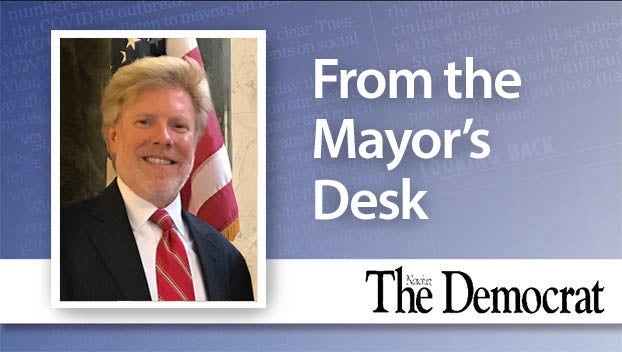Exhibit tells area’s slave trade history
Published 12:01 am Thursday, March 29, 2018
This Top of the Morning is in response to the recent column by Ben Hillyer stating tourists want more inclusive historic tours and appearing on The Natchez Democrat’s website with the headline: “Is Pilgrimage addressing the changing face of tourism?”
My traveling exhibition called Forks of the Road Enslavement Markets Sites a Major Hub of America’s Domestic “Slave” Trading at Natchez Mississippi is “going great” at Natchez Visitor Reception Center, said the Natchez tourism agency director.
People I meet who have toured the exhibition say it is great and make compliments for a great job done. Some locals think the exhibition should be on display longer and have a place where it could be on display year round. What’s even greater is the historic event that will happen because the exhibition is showing during the annual Natchez Spring Pilgrimage in 2018.
For the very first time in the 70 some years of the annual Natchez Pilgrimage, tourists coming to tour Natchez extant chattel slavery era estates called “antebellum” homes and learn local history will be able to see and read about actual enslaving “masters” ill-getting enslaved persons at Natchez Forks of the Road human commodities markets.
They will be able to see who sold and who bought enslaved people as well as who were some of them and where were enslaved people held in bondage in the Old Natchez District (Adams, Wilkinson, Franklin, Jefferson and Claiborne counties and Concordia and Tensas Parishes).
They will be able to understand Natchez being the center of chattel slavery and how its wealth was generated from it as reflected in the “antebellum” homes.
On the Forks of the Road markets exhibition, tourists and other visitors will see William Ferriday buying slaves Bolin, Aleck, Butler and Amy from dealer Benjamin Eaton of New Orleans. The town of Ferriday was named after Ferriday.
Eaton was the business partner of one Theopolis Freeman of New Orleans who sold Solomon Northup of “Twelve Years a Slave” fame.
Also at the Forks human commodity markets often was Frances Surget who bills of sales show purchased enslaved people from various dealers for his Concordia Parish and Adams County plantations.
From Theopolis Freeman in 1840, Surget ill-got 27 negroes named Amos, George, Joshua, Isaiah, Henry, Ephraim, Emanuel, Solomon, April, Cupid, Richard Craine, John, Washington, L. Henry (probably Little Henry), Hannah, Emily, Polly, Bridget, Hester, Jane, Lucinda, Caroline, Margaret, Sarah, Rody, Gracey and Agnes. All African American genealogical possibilities here. Notice only one male is listed with a first and last name
In 1847 Surget purchased William Jones, Joseph Robertson, Moses Lee, Frank Maxey, Bob Parker, David Ford, Sam Pleasant and Booker from John D. James for his Concordia Parish and Adams County plantations. In 1855 Dealers Woodroof and Hundley sold Surget Doctor Dudley, Sam Punder, Minton Gregory, Nancy Dudley, Harrison Maner, Eady Kinkins, Hannah Green, Migo Manson, Ann Woodson, Francis Mosby and Nancy Soloin for his Adams County plantation.
Dealers Freeman, James and Woodroof and Hundley all operated markets on the property now owned by the City of Natchez that’s slated to be given to the National Park Service (lot with the interpretive panels and Leland cypress trees).
Today’s local African Americans with the above last names searching for their family history to fill some of the genealogical holes in their souls can search Frances Surget family files at Mississippi Department of Archives and History in Jackson.
A couple more notable examples from the who bought and sold chart on panel 5A of the Forks exhibition are Andrew Brown of Brown’s Sawmill in Natchez who purchased Burl Lewis in 1854 from Thomas G. James, brother of John D. James who operated his operation on the lot now owned by the City of Natchez and Cicero Stampley of Jefferson County who bought Hannah from dealers Griffin and Pullum who operated his selling market on the property where the radio station is located at the Forks of the Road.
For the time being the City of Natchez via its mayor taking the lead in showcasing Friends of the Forks of the Roads Society Inc., Forks of the Road Traveling Exhibition produced by coordinator Ser Seshsh Ab Heter-CM Boxley, is standing tall along with an ever-increasing number of present entities who are embracing the history of chattel slavery and its role in the making of America.
Ser Seshsh AB HETER CM BOXLEY is leader of Equal Human Commemorations Campaign to ‘Desegregate’ history/culture in Mississippi-Central Louisiana pertaining to Chattle Slavery, Black Civil War Freedom Fighters 19th and 20th Centuries Civil Rights Diversity.




